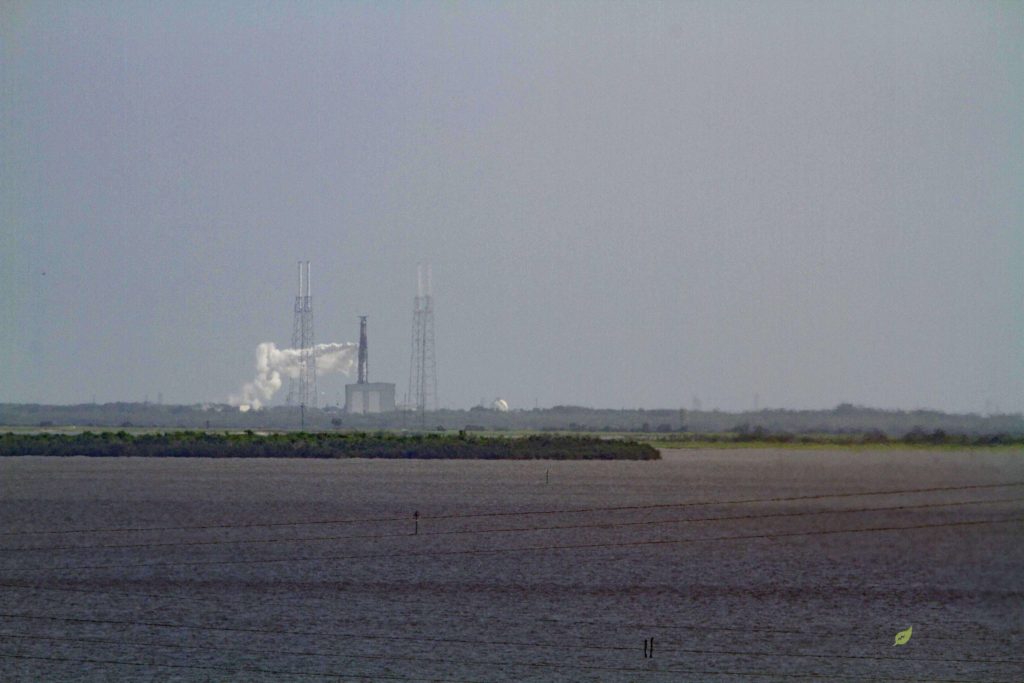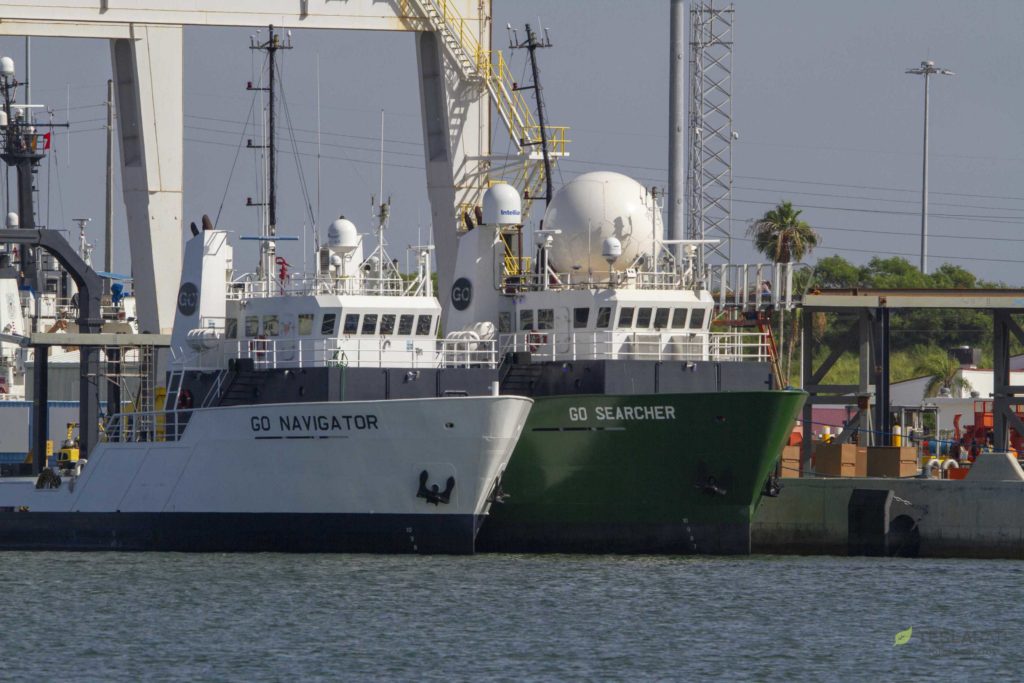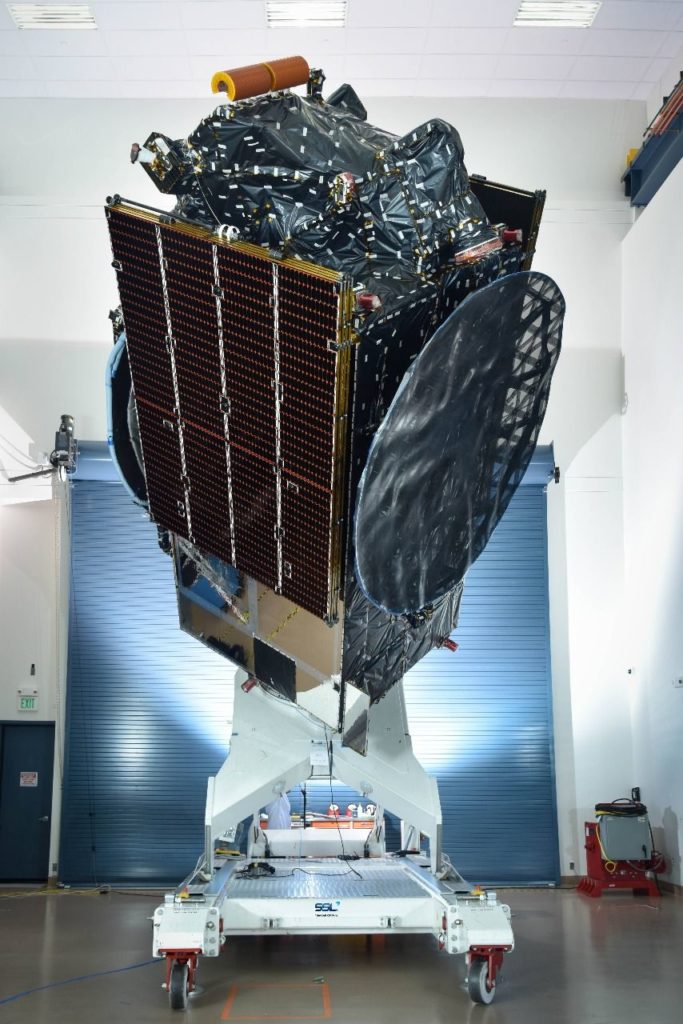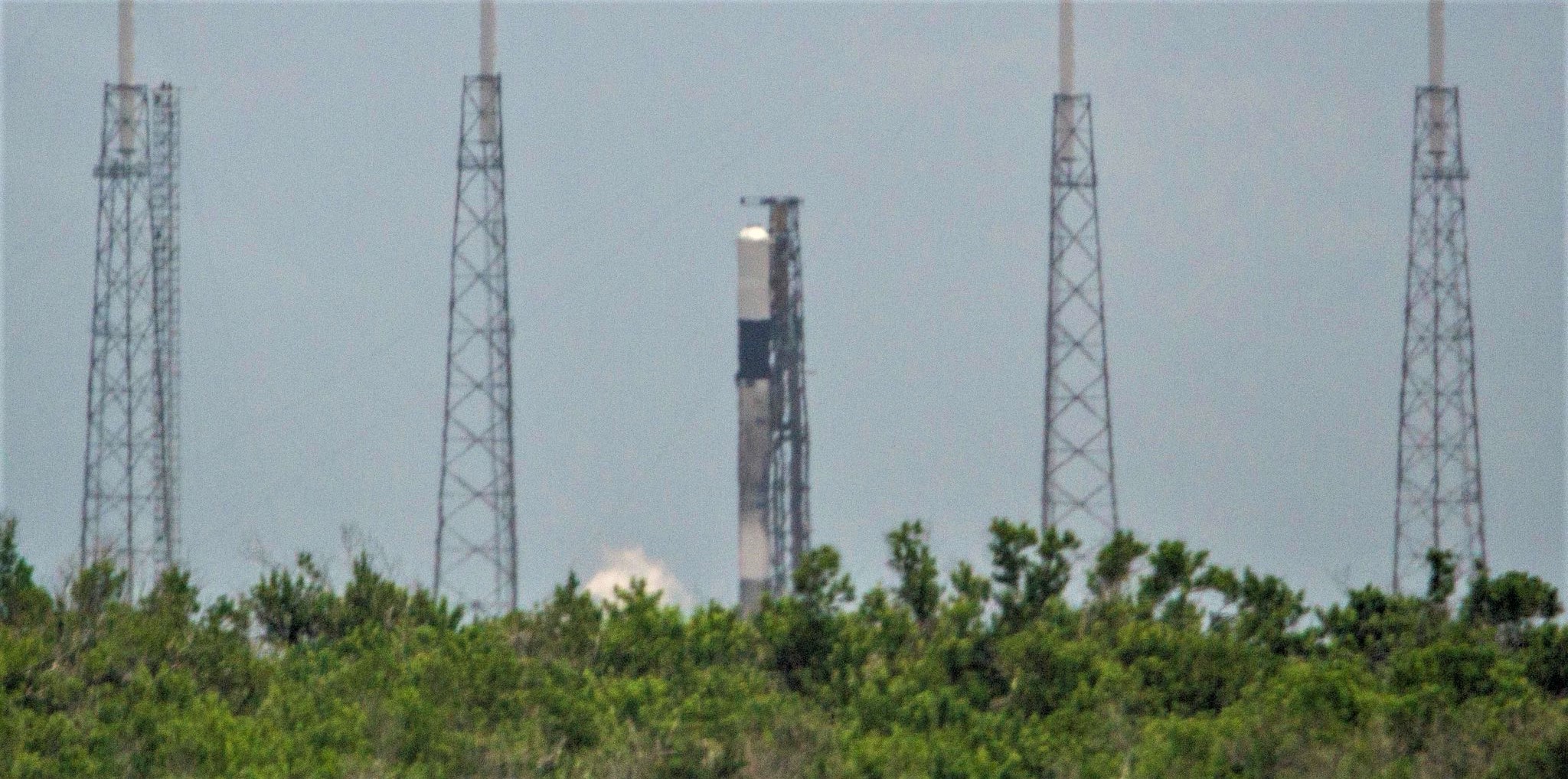
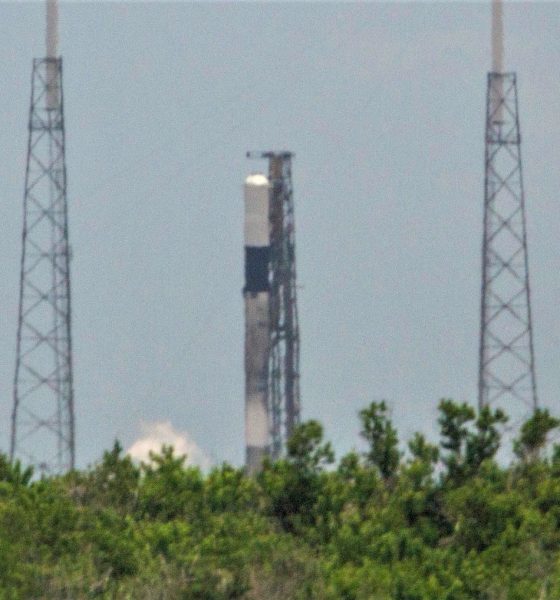
News
SpaceX spotted hot-fire testing Falcon 9 Block 5 ahead of its first reflight on August 7
Less than three months after SpaceX debuted its upgraded Falcon 9 Block 5 rocket, the company is set for an unexpectedly sudden inaugural reuse of the first highly reliable and reusable rocket to roll off of the Hawthorne, CA assembly line. Falcon 9 booster 1046 (B1046) is now targeting 1:18 AM EDT, August 7 for its second launch.
Confirmed by visual observation of a sooty Block 5 booster vertical on Cape Canaveral’s Pad 40, this reuse will be just two weeks away from beating SpaceX’s booster turnaround record of 72 days.
Static fire test of Falcon 9 complete—targeting August 7 launch of Merah Putih from Pad 40 in Florida.
— SpaceX (@SpaceX) August 2, 2018
On the ground to visually confirm plans for the historic reuse, Teslarati photographer Tom Cross also managed to capture an intriguing propellant loading and abort test, where SpaceX appeared to intentionally abort a ‘launch’ attempt after rapidly loading a full complement of liquid oxygen (LOX) and rocket-grade kerosene (RP-1).
While not 100% clear why this testing was done today, an extensive understanding of Falcon 9 Block 5’s behavior during propellant late-load and launch abort scenarios are both critical for the reliable operation of the upgraded rockets and invaluable for the first Crew Dragon launches later this year and early next, the latter with astronauts on board. With humans atop the rocket, a deep understanding of the vehicle’s behavior during a wide range of off-nominal scenarios is more critical than ever, be it required by NASA or simply a side effect of due diligence on behalf of SpaceX.
https://twitter.com/_TomCross_/status/1025074341040533504
A new era of reusable rockets
Regardless, the main focus of this mission is to launch a payload for Indonesian operator PT Telkom Indonesia, in this case a ~5800 kg (12800 lb) geostationary communications satellite known as Merah Putih (formerly Telkom 4). On the SpaceX side of things, this mission is absolutely critical for the company’s future – it will mark the (hopefully) successful inaugural reuse of a Falcon 9 Block 5 booster, the first of many dozens or even hundreds to come over the next several years if SpaceX’s can make good on its aspirations.
While not immensely impressive in the sense that B1046’s refurbishment took ~85 days to Block 4’s record 72-day turnaround, that cursory conclusion is far from accurate. The record turnaround with Block 4 booster B1045 was essentially the culmination of more than a year of experience with nearly a dozen Block 3 and Block 4 Falcon 9 reuses. While that experience definitely transferred in part to SpaceX’s first attempt at reusing Falcon 9 Block 5 (and especially so with the actual design of its reusability-focused upgrades), it’s worth noting that the first reuses of Falcon 9s averaged booster turnaround times of 180-250 days, nearly double or triple the time between Block 5’s first-ever launch and that same booster’s first reflight.
- Falcon 9 B1046 vents during a launch abort test just before its successful static fire, August 2nd. (Tom Cross)
- Drone ship OCISLY preps for its second Falcon 9 recovery in less than three weeks. (Tom Cross)
- A new vessel – GO Navigator – joined SpaceX’s fleet on July 31st, taking the place of fairing recovery stand-in GO Pursuit. (Tom Cross)
- Merah Putih (formerly Telkom 4) seen preparing for launch in Florida. (SSL)
Even still, B1046’s debut launch, landing, and refurbishment were wholly unique considering that SpaceX – according to Elon Musk – conducted an extensive “teardown” analysis of the pathfinder rocket after it was transported from the drone ship back to one of the company’s Cape Canaveral refurbishment facilities. It’s very likely the case that that teardown was one of the most extensive SpaceX has done with a recovered rocket, couched on the fact that the company’s future is wholly balanced on Falcon 9 Block 5’s success and ease/efficiency of reusability.
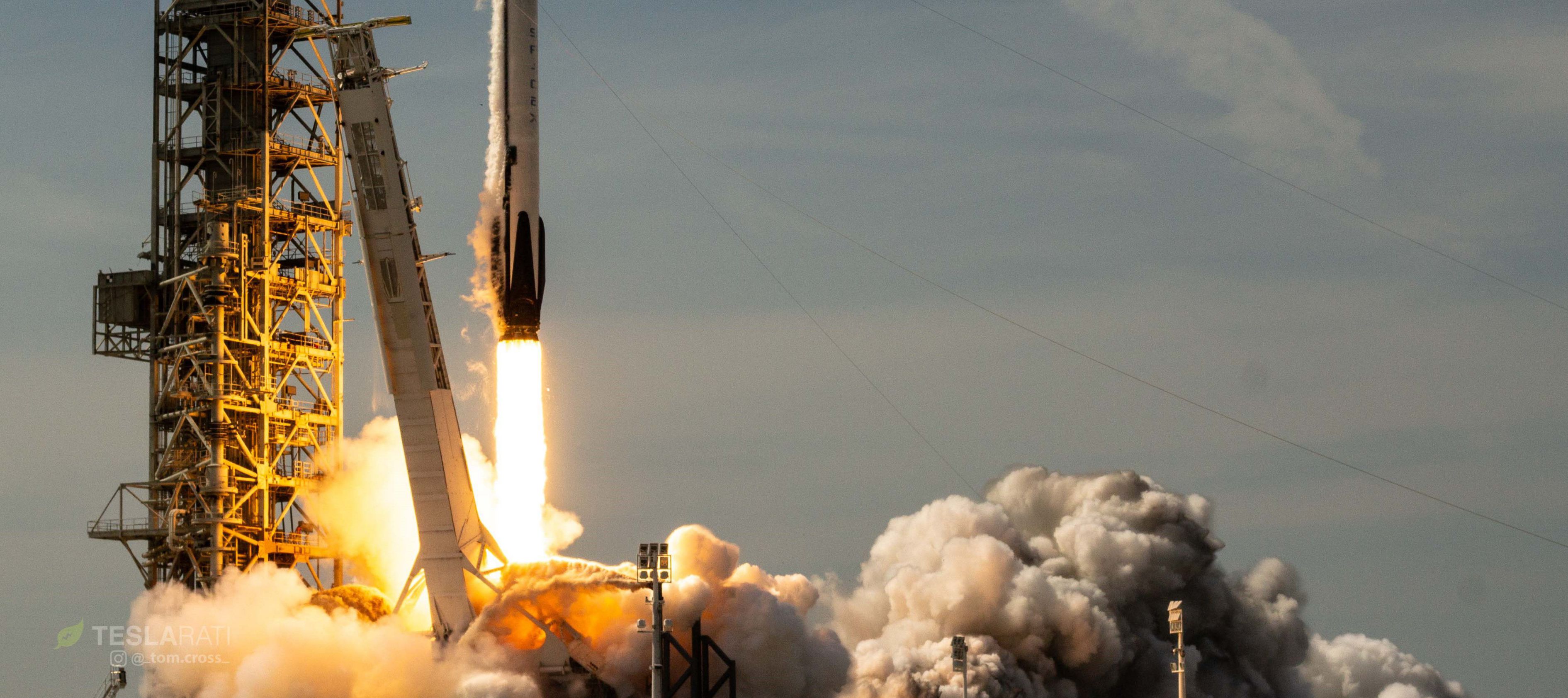
That critical teardown process likely took anywhere from 30-60 days, if not simply as long as needed to do it right, after which the rocket was fully reassembled and transported to SpaceX’s Launch Complex 40 (LC-40). Roughly eight days after it arrived at LC-40, B1046 rolled out to the pad’s launch mount, went vertical, and completed a series of tests (including static fire) on Thursday (8/2) afternoon. The static fire was confirmed by a few observers, while Tom Cross captured the first unequivocal proof that the rocket is sooty (and thus B1046).
This moment may seem small on the scale of SpaceX’s many towering achievements, but it will very likely become a fundamental keystone in the future history of affordable access to space.
prompt updates, on-the-ground perspectives, and unique glimpses of SpaceX’s rocket recovery fleet (including fairing catcher Mr Steven) check out our brand new LaunchPad and LandingZone newsletters!

News
Tesla (TSLA) receives “Buy” rating and $551 PT from Canaccord Genuity
He also maintained a “Buy” rating for TSLA stock over the company’s improving long-term outlook, which is driven by autonomy and robotics.

Canaccord Genuity analyst George Gianarikas raised his Tesla (NASDAQ:TSLA) price target from $482 to $551. He also maintained a “Buy” rating for TSLA stock over the company’s improving long-term outlook, which is driven by autonomy and robotics.
The analyst’s updated note
Gianarikas lowered his 4Q25 delivery estimates but pointed to several positive factors in the Tesla story. He noted that EV adoption in emerging markets is gaining pace, and progress in FSD and the Robotaxi rollout in 2026 represent major upside drivers. Further progress in the Optimus program next year could also add more momentum for the electric vehicle maker.
“Overall, yes, 4Q25 delivery expectations are being revised lower. However, the reset in the US EV market is laying the groundwork for a more durable and attractive long-term demand environment.
“At the same time, EV penetration in emerging markets is accelerating, reinforcing Tesla’s potential multi‑year growth runway beyond the US. Global progress in FSD and the anticipated rollout of a larger robotaxi fleet in 2026 are increasingly important components of the Tesla equity story and could provide sentiment tailwinds,” the analyst wrote.
Tesla’s busy 2026
The upcoming year would be a busy one for Tesla, considering the company’s plans and targets. The autonomous two-seat Cybercab has been confirmed to start production sometime in Q2 2026, as per Elon Musk during the 2025 Annual Shareholder Meeting.
Apart from this, Tesla is also expected to unveil the next-generation Roadster on April 1, 2026. Tesla is also expected to start high-volume production of the Tesla Semi in Nevada next year.
Apart from vehicle launches, Tesla has expressed its intentions to significantly ramp the rollout of FSD to several regions worldwide, such as Europe. Plans are also underway to launch more Robotaxi networks in several more key areas across the United States.
News
Waymo sues Santa Monica over order to halt overnight charging sessions
In its complaint, Waymo argued that its self-driving cars’ operations do not constitute a public nuisance, and compliance with the city’s order would cause the company irreparable harm.

Waymo has filed a lawsuit against the City of Santa Monica in Los Angeles County Superior Court, seeking to block an order that requires the company to cease overnight charging at two facilities.
In its complaint, Waymo argued that its self-driving cars’ operations do not constitute a public nuisance, and compliance with the city’s order would cause the company irreparable harm.
Nuisance claims
As noted in a report from the Los Angeles Times, Waymo’s two charging sites at Euclid Street and Broadway have operated for about a year, supporting the company’s growing fleet with round-the-clock activity. Unfortunately, this has also resulted in residents in the area reportedly being unable to sleep due to incessant beeping from self-driving taxis that are moving in and out of the charging stations around the clock.
Frustrated residents have protested against the Waymos by blocking the vehicles’ paths, placing cones, and “stacking” cars to create backups. This has also resulted in multiple calls to the police.
Last month, the city issued an order to Waymo and its charging partner, Voltera, to cease overnight operations at the charging locations, stating that the self-driving vehicles’ activities at night were a public nuisance. A December 15 meeting yielded no agreement on mitigations like software rerouting. Waymo proposed changes, but the city reportedly insisted that nothing would satisfy the irate residents.
“We are disappointed that the City has chosen an adversarial path over a collaborative one. The City’s position has been to insist that no actions taken or proposed by Waymo would satisfy the complaining neighbors and therefore must be deemed insufficient,” a Waymo spokesperson stated.
Waymo pushes back
In its legal complaint, Waymo stated that its “activities at the Broadway Facilities do not constitute a public nuisance.” The company also noted that it “faces imminent and irreparable harm to its operations, employees, and customers” from the city’s order. The suit also stated that the city was fully aware that the Voltera charging sites would be operating around the clock to support Waymo’s self-driving taxis.
The company highlighted over one million trips in Santa Monica since launch, with more than 50,000 rides starting or ending there in November alone. Waymo also criticized the city for adopting a contentious strategy against businesses.
“The City of Santa Monica’s recent actions are inconsistent with its stated goal of attracting investment. At a time when the City faces a serious fiscal crisis, officials are choosing to obstruct properly permitted investment rather than fostering a ‘ready for business’ environment,” Waymo stated.
News
Tesla FSD v14.2.2 is getting rave reviews from drivers
So far, early testers have reported buttery-smooth drives with confident performance, even at night or on twisty roads.

Tesla Full Self-Driving (Supervised) v14.2.2 is receiving positive reviews from owners, with several drivers praising the build’s lack of hesitation during lane changes and its smoother decision-making, among others.
The update, which started rolling out on Monday, also adds features like dynamic arrival pin adjustment. So far, early testers have reported buttery-smooth drives with confident performance, even at night or on twisty roads.
Owners highlight major improvements
Longtime Tesla owner and FSD user @BLKMDL3 shared a detailed 10-hour impression of FSD v14.2.2, noting that the system exhibited “zero lane change hesitation” and “extremely refined” lane choices. He praised Mad Max mode’s performance, stellar parking in locations including ticket dispensers, and impressive canyon runs even in dark conditions.
Fellow FSD user Dan Burkland reported an hour of FSD v14.2.2’s nighttime driving with “zero hesitations” and “buttery smooth” confidence reminiscent of Robotaxi rides in areas such as Austin, Texas. Veteran FSD user Whole Mars Catalog also demonstrated voice navigation via Grok, while Tesla owner Devin Olsen completed a nearly two-hour drive with FSD v14.2.2 in heavy traffic and rain with strong performance.
Closer to unsupervised
FSD has been receiving rave reviews, even from Tesla’s competitors. Xpeng CEO He Xiaopeng, for one, offered fresh praise for FSD v14.2 after visiting Silicon Valley. Following extended test drives of Tesla vehicles running the latest FSD software, He stated that the system has made major strides, reinforcing his view that Tesla’s approach to autonomy is indeed the proper path towards autonomy.
According to He, Tesla’s FSD has evolved from a smooth Level 2 advanced driver assistance system into what he described as a “near-Level 4” experience in terms of capabilities. While acknowledging that areas of improvement are still present, the Xpeng CEO stated that FSD’s current iteration significantly surpasses last year’s capabilities. He also reiterated his belief that Tesla’s strategy of using the same autonomous software and hardware architecture across private vehicles and robotaxis is the right long-term approach, as it would allow users to bypass intermediate autonomy stages and move closer to Level 4 functionality.
